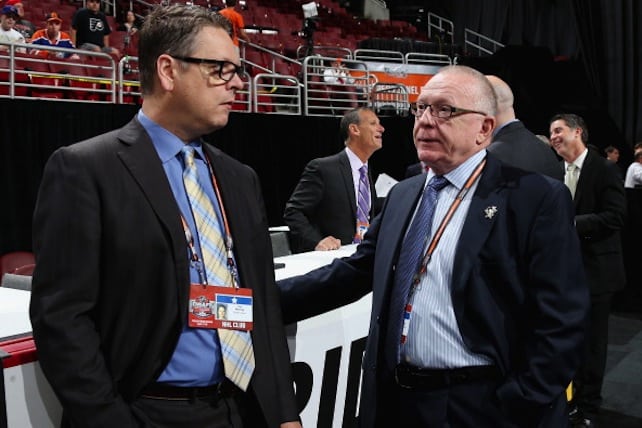
Behind the scenes of NHL free agency: how deals get done
NHL Free agency involves a lot more than just throwing money at players. The prep takes all year for team executives, and each offer and contract involves a ton of work from top to bottom.
 Behind the scenes of NHL free agency: how deals get done
Behind the scenes of NHL free agency: how deals get doneThe opening of free agency July 1 isn’t what it used to be, mainly because most of the league’s star players get signed to lucrative long-term extensions and never make it to market. If you look at the numbers – almost 100 players signed as free agents last July 1 – you might think all 30 teams’ front offices are a beehive of activity, and for some of them that may indeed be the case.
But a number of GMs insist that while July 1 is a big day on the hockey calendar, it’s not as frantic as some might expect. “Everyone has different needs, and you have to decide if free agency is the way to go or if you are you better off to make a trade,” said Dallas Stars GM Jim Nill. “We’re all locking up players, deciding what the core of the team is. The core is six to eight players, and we are locking them up to four-to-eight-year contracts.”
How active a team is when the free agency officially opens depends on a number of things. If a team thinks it can win the Stanley Cup, it may fine-tune its roster with a few moves. Or it could be a significant makeover, as Rangers GM Glen Sather did after a Cup final loss in 2014. New York led all teams with eight signings (seven from different organizations) July 1. Three others – the Pittsburgh Penguins, Florida Panthers, and New York Islanders – signed six.
Not every team was busy, though. The Boston Bruins, Nashville Predators and San Jose Sharks didn’t sign a single free agent on the first day, while Columbus only re-signed defenseman Frederic St-Denis. All told, 94 free agents were inked July 1 (14 by their old teams), and another 23 were signed the following day.
Of course, the overriding factor on what a team does is how any move affects its salary cap. Teams’ cap experts keep tabs on how much cap space their organization has, as well as the other 29 organizations. The information is updated almost daily. “We have a book on every team,” said a GM who requested anonymity. “We know where every team is in terms of committed dollars and what contracts they may make moving forward.”
Outside of contacting players at the start of free agency in an attempt to sign them, most of the preparation for the day is done well in advance. “You have to forecast what your team needs and what you have internally,” the GM said. “You are always working six months to a year ahead. You have to be proactive in your decision making and closely examine the other 29 teams to see where they are, see what their decisions are, what their cap space could be, see what kind of depth issues they may have if they have a surplus of players. Those are the teams you talk to about trades.”
As a part of the most recent collective bargaining agreement, teams can now host prospective free agents between the conclusion of the draft through June 30. The new twist has lessened the frantic nature of the opening of free agent season, as some players have already decided which team they will sign with. Former Penguins defenseman Brooks Orpik, for example, visited Washington last year prior to the opening of free agency and made up his mind to sign with the Capitals.
GMs are surrounded by their staff during free agency – including their assistant GM, capologist, pro and amateur scouts and other advisors – working the phones to contact prospective players. While there is to be no negotiating during the visitation period, GMs said the reason teams are able to come to terms so quickly with players July 1 is because the teams and player agents use comparable contracts. Player A wants what Player B got in his deal, and the team agrees or disagrees.
Pittsburgh Penguins GM Jim Rutherford said his staff is always on its toes July 1. “Once free agency starts, you have to be prepared to move quickly,” he said. “Your assistant GM is important because as the GM, you can only work one phone at a time. If you are interested in two or three players your assistant GM has to make calls, too.”
Teams’ pro scouts keep running lists of pending free agents, prioritized by the needs of the organization. There isn’t a lot of star power attached to the first day of free agency anymore, but it’s still possible to find quality players that fit the need of your organization.
Amateur scouts are often asked their opinion of players they may have observed as juniors or college players. “You want to make decisions with as much information as possible,” the anonymous GM said. “The amateur guys may have a read or a book on a player, too, about his character and background, etc. The pro scouts evaluate where a player is now in his career. You are always trying to find a player who is on the cusp of breaking through.”
This story appeared in June 22 edition of The Hockey News magazine. Get features like this one, and much more, delivered to your door all year long by subscribing now.

